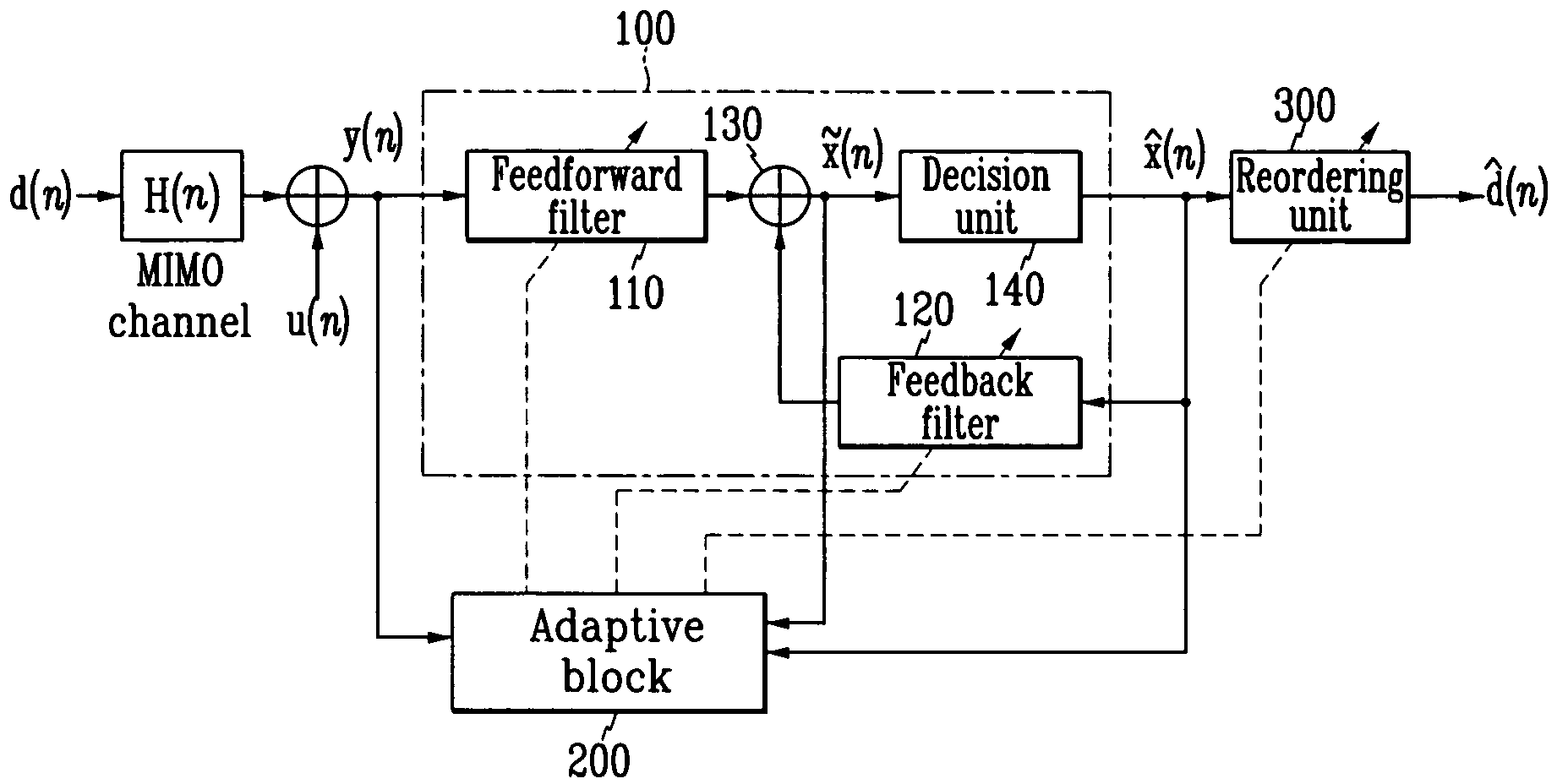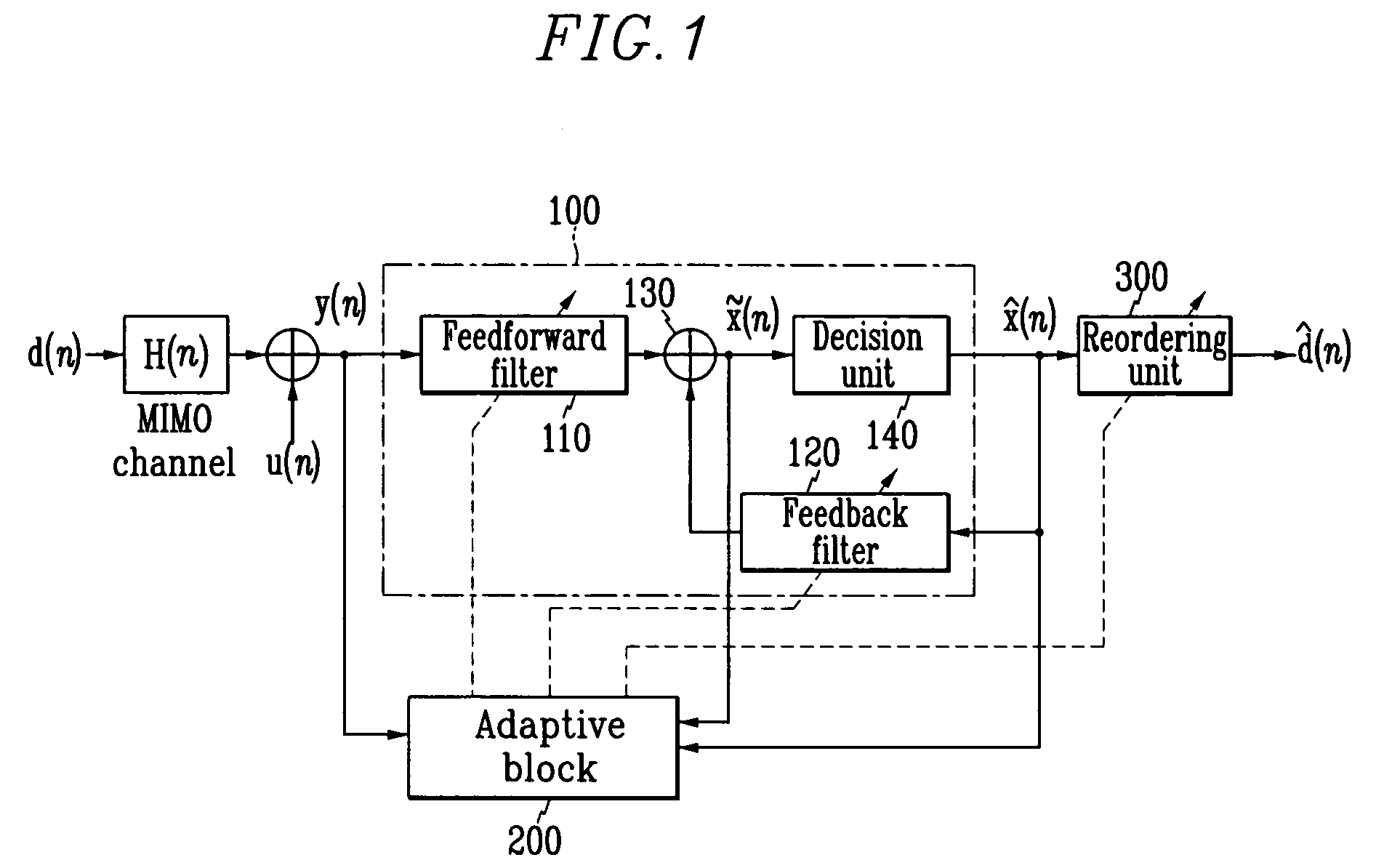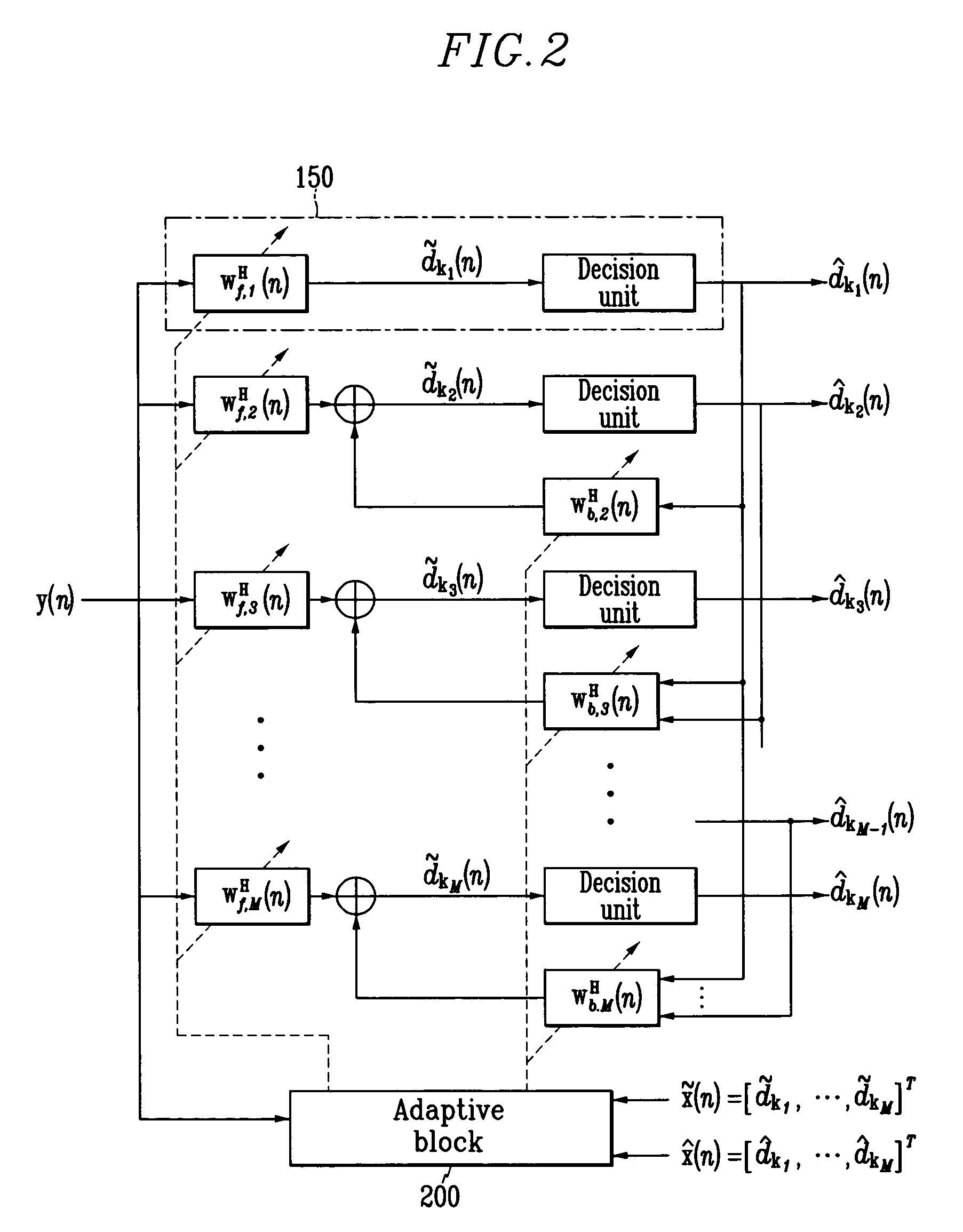Adaptive receiving system and method for MIMO
a technology of receiving system and receiving method, applied in the field of adaptive receiving system and method for mimo, can solve the problems of increasing computational complexity, steep improvement of detection performance, and requiring techniques which increase data rate per bandwidth. the effect of complexity
- Summary
- Abstract
- Description
- Claims
- Application Information
AI Technical Summary
Benefits of technology
Problems solved by technology
Method used
Image
Examples
Embodiment Construction
[0053]In the following detailed description, only the preferred embodiment of the invention has been shown and described, simply by way of illustration of the best mode contemplated by the inventor(s) of carrying out the invention. As will be realized, the invention is capable of modification in various obvious respects, all without departing from the invention. Accordingly, the drawings and description are to be regarded as illustrative in nature, and not restrictive.
[0054]A MIMO adaptive receiving system according to a preferred embodiment of the present invention will be described in detail with reference to FIG. 1.
[0055]FIG. 1 shows a block diagram of an adaptive receiving system for the MIMO according to a preferred embodiment of the present invention.
[0056]As shown, the adaptive receiving system comprises an equalizer 100, an adaptive block 200, and a reordering unit 300. The equalizer 100 is classified as a linear equalizer 150, shown in FIG. 2, for detecting the initial tran...
PUM
 Login to View More
Login to View More Abstract
Description
Claims
Application Information
 Login to View More
Login to View More - R&D
- Intellectual Property
- Life Sciences
- Materials
- Tech Scout
- Unparalleled Data Quality
- Higher Quality Content
- 60% Fewer Hallucinations
Browse by: Latest US Patents, China's latest patents, Technical Efficacy Thesaurus, Application Domain, Technology Topic, Popular Technical Reports.
© 2025 PatSnap. All rights reserved.Legal|Privacy policy|Modern Slavery Act Transparency Statement|Sitemap|About US| Contact US: help@patsnap.com



